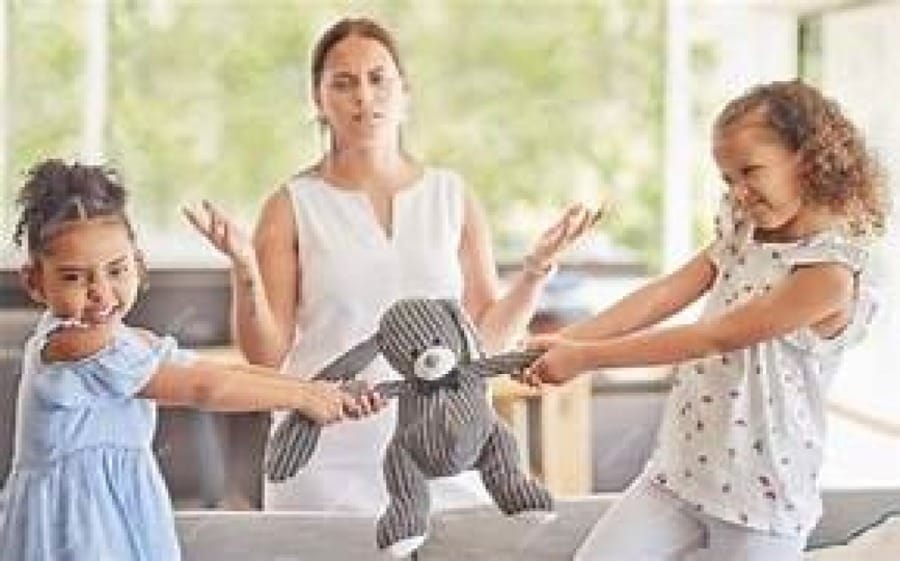Sibling Rivalry and Emotions: Coaching Your Children Through the Chaos

The yelling started before breakfast.
My two grandchildren, one with a waffle half-eaten in hand, the other gripping a Superman doll, were locked in a verbal battle over “who always gets what they want.”
My daughter rolled her eyes in frustration, reached for a cup of coffee, and moved to the adjoining room.
I decided to choose peace and understanding. But instead of refereeing, lecturing, or bribing them into silence, I tried something different. I pulled up a chair and said, “Sounds like some big feelings are in the room. Let’s talk about this.”
I attempted to turn a power struggle into a teachable moment for them and my daughter’s peace of mind.
Welcome to the muddled and complex world of emotional coaching during sibling rivalry.
The Emotional Heart of Sibling Conflict
Underneath the disagreements of sibling rivalry lie deeper feelings of jealousy, injustice, being left out, and not feeling seen. It’s rarely just about toys, turns, or who sat where at lunch.
Usually, a parent is tempted to shut down the noise and restore peace at any cost, but these moments hold enormous emotional learning potential.
According to Dr. John Gottman, children who experience emotional coaching from parents during conflicts—especially with siblings—develop stronger emotional regulation skills and empathy over time.¹
Sibling fights can feel exhausting. But with the right mindset, they can become a front-row seat to emotional growth.
A True Story: The Crushed Castle
Let me share a story from our family life.
During a family beach day, my 5-year-old granddaughter spent 30 minutes building a sandcastle. Her 3-year-old brother came zooming in with his toy plane and crashed into the castle
Tears. Screams. Accusations. A storm of feelings.
In the past, the old me might have said to the culprit: “Say you’re sorry!” or yelled, “Why would you do that?” Or even told my granddaughter, “You shouldn’t have built it there.” But I caught myself and knelt beside them instead.
To my granddaughter, I said:
“That was so frustrating. You worked hard, and now it’s all knocked down. It’s okay to be mad.”
To my grandson, I offered:
“You were excited to play, but you didn’t see what she was doing. Now she’s hurt. That matters too.”
We took deep breaths, and together we rebuilt both the castle and the relationship. That was emotional coaching in action: validating feelings, guiding understanding, and supporting healing and unity.
What Is Emotional Coaching?
Emotional coaching is the process of helping children recognize, name, and manage their emotions, particularly during challenging moments.
In sibling rivalry, it means going beyond who’s “right” or “wrong” and focusing on what each child is feeling, and what they can do with that feeling.
The Gottman 5-Step Model
Dr. John Gottman outlines a five-step approach parents can use:
- Be aware of your child’s emotions
Pay attention to the tension building before the eruption. - See conflict as an opportunity for connection
Every fight is a chance to teach, not just correct. - Listen empathetically and validate feelings
“You’re angry because she didn’t share—that makes sense.” - Help children label emotions
“That’s frustration. That’s disappointment. That’s hurt.” - Guide problem-solving and set limits
“It’s okay to be mad. It’s not okay to hit. What can you do instead?”
Children who are exposed to this type of coaching often develop better sibling relationships, greater emotional intelligence, and fewer behavioral problems later in life.²
Emotion Coaching During Sibling Conflict
You don’t need to be a therapist; All you need is curiosity, compassion, and a pause button.
- Narrate the Moment Without Blame
- Instead of: “Why did you take that from her again?”
- Try: “Looks like both of you wanted the same toy at the same time.”
Neutral language helps de-escalate defensiveness and invites calm.
- Coach One Child at a Time
Give each child space to be heard. “Tell me what happened” can open the door. Then validate both perspectives, even if one child acted unkindly. - Name Feelings Aloud
Most children won’t say “I feel excluded.” They act it out. You can help:- “You’re mad because your brother didn’t let you play.”
- “You’re feeling left out and sad. That makes sense.”
Naming emotions is the first step toward managing them.
- Avoid Forced Apologies
Apologies are meaningful only when sincere. Instead of “Say you’re sorry,” try:- “What could you do to make it right?”
- “What would help your sister feel better?”
This builds empathy, not just compliance.
- Encourage Collaborative Problem-Solving
Ask:- “What solution can you both agree on?”
- “How can we prevent this from happening again?”
Conflict becomes a practice ground for negotiation, fairness, and emotional expression.
What About Parents?
Parents, sibling battles can ruffle our emotions too, especially when they are loud, repetitive, or trigger unpleasant childhood memories.
It helps to remind yourself:
- You don’t have to “fix” it right away.
- You’re not a bad parent if they fight.
- Your calm is the most powerful tool in the room.
Take a deep breath. Intervene as a coach, not a judge.
If we use moments of sibling rivalry as an emotional classroom, they can be incredibly productive. Each fight is a rehearsal for real-life relationships: learning to be heard, to disperse jealousy, and to mend after hurt.
When we work through emotional squabbles with our children, rather than ignoring them, we are intentionally raising emotionally intelligent, caring individuals.
Footnotes
- Gottman, J., Katz, L., & Hooven, C. (1997). Meta-Emotion: How Families Communicate Emotionally. Mahwah, NJ: Lawrence Erlbaum Associates. ↩
- Eisenberg, N., Spinrad, T. L., & Eggum, N. D. (2010). Emotion-related self-regulation and its relation to children’s maladjustment. Annual Review of Clinical Psychology, 6, 495–525. ↩